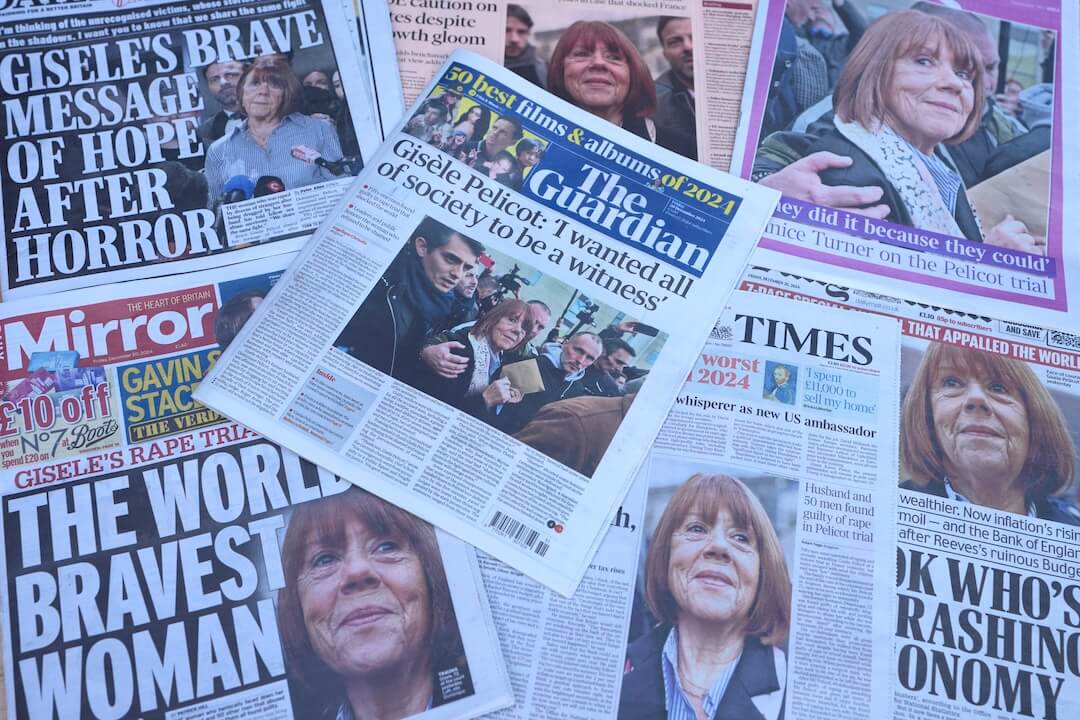On Saturday, as the earthquake hit Nepal, Bibek Bhandari sat at home in Kathmandu flipping channels on his TV. He felt a jolt and thought perhaps it was just a small quake. Nepal had a few the year before.
“But suddenly the tremor grew stronger and the whole house started shaking,” said Bhandari, a freelance journalist in Nepal, via email. “I got off from my bed and tried to reach the door. It was dizzying and it just wouldn’t stop. The house shook so bad that I thought it was going to crumble right then and there. Those few seconds, I must say, were more than terrifying.”
An hour or two later, he walked into the central part of Kathmandu.
“The devastation I saw, especially at the Kathmandu’s Durbar Square, was agonizing.”
So that was a 7.4M earthquake. really hope people are safe. The ground have literally cracked. #Kathmandu #earthquake pic.twitter.com/4YicJW74HK
— Bibek Bhandari (@bibekbhandari) April 25, 2015
The next day, Sunday, NPR’s Kirk Siegler, a reporter on the national desk, sat in a plane circling over Kathmandu for more than an hour after a 6.8-magnitude aftershock hit and the airport closed. After landing in a storm, he sat on the runway for another hour watching as hundreds of people emerged from an Indian military transport plane.
NBC’s Chief Foreign Correspondent Richard Engel also flew into Kathmandu from Istanbul on Sunday on a flight mostly full of Turkish rescue teams.
“It was an unusual flight,” said Engel in an email. “There was a rescue dog sleeping near my feet. I didn’t notice it at first and was surprised when something put a wet nose on my ankle.”
After landing, as he made his way through passport control, a big aftershock hit.
“The arrival hall shook,” Engel said. “The immigration officials ran off. They later returned and we were allowed into the country.”
NPR’s Russell Lewis, Southern U.S. bureau chief, left for Nepal’s capital on Saturday. It took him nearly 40 hours to get there.
‘Nature gets a big vote.’
Like many people in parts of Nepal hit by the quake, Siegler spent his first night in the country sleeping outside.
“We were fortunate though to have at least some shelter,” he said in an email. “But I couldn’t get the worry out of my head about how challenging it will be to even connect with our editors, let alone file a radio story from here.”
After a chilly, rainy, restless night in the hotel’s garden, things started to improve, Siegler said, even though he learned there wasn’t a hotel room for him. He met with a colleague who had a satellite phone “which was key because with the power out — and the cell phone data down — we had no other means of filing for the first 24 hours. Just getting any information at all was tough, so, like in other major natural disasters, we decided to focus on what we could report, telling the harrowing stories of escape and personal suffering.”
Lewis and his team brought tents, sleeping bags, a four-day stockpile of food and water, a trauma kit, first aid supplies and medicine.
“It’s difficult to buy food at the moment,” he said. “Food is definitely in short supply. Bottled water is easier to come by but it’s still not easy. I went on a one-hour shopping trip today and only ended up with 12 liters of water. Most stores and shops are still closed. A few have reopened but their shelves are basically empty. All of the water I bought today was from street vendors.”
Still, there’s no panic, Lewis said. He thought most people knew it was going to take time for a regular supply food and water to make it in.
But safety is a constant worry, said Jerry Harmer, an AP video editor who is leading AP’s coverage across formats from Nepal.
“While you do what you can, there is inevitably an element of risk involved because if you are editing or filing – or sleeping – you do so indoors,” he said in an email.
“We take precautions, but there are always unknowns,” Engel agreed. “Nature gets a big vote.”
‘…No power means they can’t charge anything.’
Since arriving in Nepal, Siegler feels cut off from the news. Cell service has mostly been down. The hotel’s TV doesn’t work. He’s not sure what else is being reported about Nepal.
“I’ve seen people out on the streets reading newspapers each morning,” he said. “It seems that they are, along with local radio, the primary means for Nepalese to learn what’s going on.”
When Bhandari traveled to Harisiddhi, a village near Kathmandu, he asked people there where they’re getting their information.
“Most of them said they have no proper info or anyone bothers to give them any,” he said. “They just sit and wait for neighbors to come to them and say if there are good distribution etc. nearby. They have mobile phones and radio, but they said no power means they can’t charge anything.”
With little mobile service, it’s hard to keep up with the news coming out of Nepal, Bhandari said.
“But I think everyone is telling compelling human stories for the time being – stories of loss and survival. That gives a human face to the tragedy and people can relate to it,” he said.
He’d like to see more coverage from remote areas, but getting there is tough, “so it might just be a matter of time,” he said. “I think it’s important to tell what’s happening in these places and the issues they’re facing because these are the places that one hardly sees, and it’s unfortunate that people get to see it only after such tragedies.”
Weeks before the earthquake, the Jajarkot district in western Nepal had a swine flu outbreak, Bhandari said.
“Now with the earthquake, the attention to one of Nepal’s most remote districts and the situation there is completely overshadowed by the earthquake news. Medical supplies were already low there and people were highly affected — so it’s just sad to see this story disappear from the radar. ”
Engel agreed. He reached base camp at Mount Everest overnight, and said “clearly the biggest stories that are not getting out are the ones happening in remote corners of this country that are now practically inaccessible.”
‘There is plenty of tragedy, but not the hostility.’
Siegler has covered several major disasters, but this is his first overseas assignment for NPR.
“Logistically, it is the most challenging due to it not being safe to sleep indoors,” he said. “So you’re running on jet lag, of course, but also little sleep, so at times it’s hard to focus. But like in other big stories, for now, you just sort of kick in and hope the adrenaline will keep you going.”
The destruction in Kathmandu is less than Harmer saw from the Kashmir earthquake, but a big challenge has just been keeping in touch with journalists once they’re out reporting.
“There is no central clearing house of information where you can gather to get the latest. Often it is a case of going out and just hoping to find things,” he said. “These logistical challenges are compounded by the fact that basic services have been disrupted; banks are closed, shops are shut, petrol is hard to get in the quantities you need to run generators.”
Still, Engel said, it’s nothing like reporting from a war zone.
“There are no guns around. No militias,” he said. “There is plenty of tragedy, but not the hostility.”
This is Lewis’ fourth international reporting trip with NPR, he covered the earthquake in Haiti in 2010, the tsunami and earthquake in Japan in 2011 and the typhoon in the Philippines in 2013.
“All of the stories have been different with their own unique challenges,” he said. “In Haiti, we mobilized a team of four people. It wasn’t long before the city was running out of food, water and fuel. So we created our own ‘supply chain.’ I was flown into Santo Domingo, Dominican Republic and began ferrying supplies from the Dominican Republic to Port-au-Prince. I did that run three times. It took ten hours each way. Japan was easier – because of our team was based in Tokyo (which was largely unaffected by the earthquake). So we had everything we needed in one of the world’s biggest cities. Tacloban in the Philippines couldn’t have been more different. It was a city that was basically obliterated by the typhoon. It was a major challenge to find food and water. In the early days, we ended up rationing everyone on our team to 2 liters of water per day. On most days we only had enough food to eat once per day. If I recall correctly, I lost about fifteen pounds on that assignment.”
Unlike foreign journalists who came to Nepal to cover the earthquake, it happened where Bhandari lives. And even after the breaking news cycle ends, he expects the story of what happened in Nepal to continue, focusing on how well prepared the country was for the quake, how the government responded and how Nepal will move forward.
“Kathmandu is my hometown,” he said, “so I’ll be here.”









